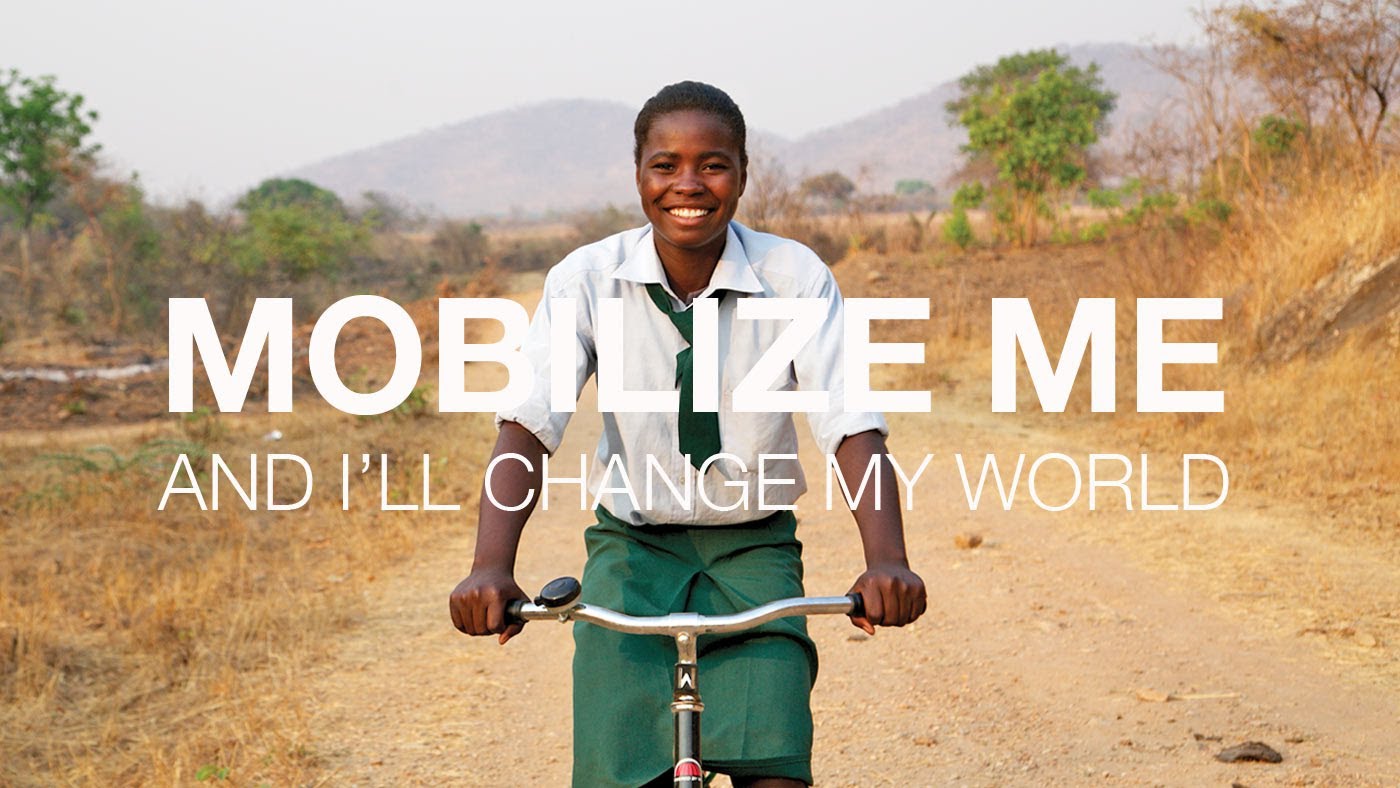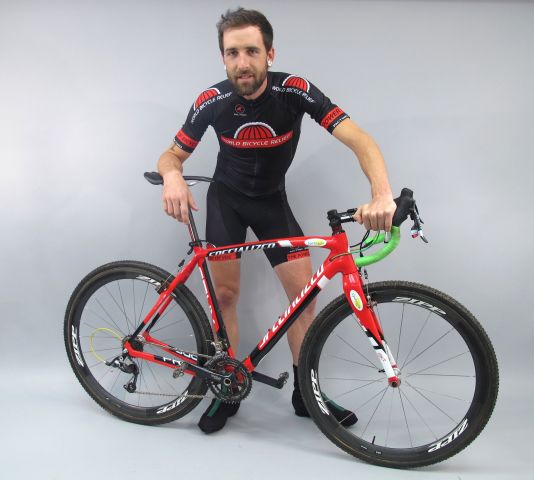The mark of a good piece of technology is that it is beneficial across spectrums in a number of different ways. Something that can be used for enjoyment and fitness for one person as the next person utilizes it to go fast and make prize money as yet another person uses it for transportation and providing a living for their family. This piece of technology is obviously the bicycle but what is not so obvious to the former two is just how impactful it can be to someone’s life in certain parts of the world.
In first world countries, we take for granted the ease of transportation and getting from point A to point B whether it’s just down the street or an hour’s drive away. In parts of Africa, personal motorized transportation is not common place for the average family leaving kids with long distances to walk to school, parents with long distances to walk for work as well as water in some areas, and small businesses to have to move themselves, tools, and products by hand. A bicycle can help to not only ease transportation but also enable people to have more time to do other things such as going to school and to be more productive whether at their job, farm, or even simply with enjoyment. It is a piece of technology that enables people on a large scale across spectrums.
Getting Bikes Into The Right People’s Hands
The challenge is getting bikes into the people’s hands that can receive the greatest benefit from them. Often times if someone does have a bicycle in these parts of the world and it breaks down, there are no tools or spare parts to fix it. World Bicycle Relief is having an incredible impact on the people who need transportation most by not only raising funds for bikes but also implementing facilities, in Africa in particular, to build the bikes and maintain them with local employees. These bikes are then given to kids, parents, workers; communities that can benefit the most from them. Running an organization in this way allows for multiple beneficiaries, not just the end user.
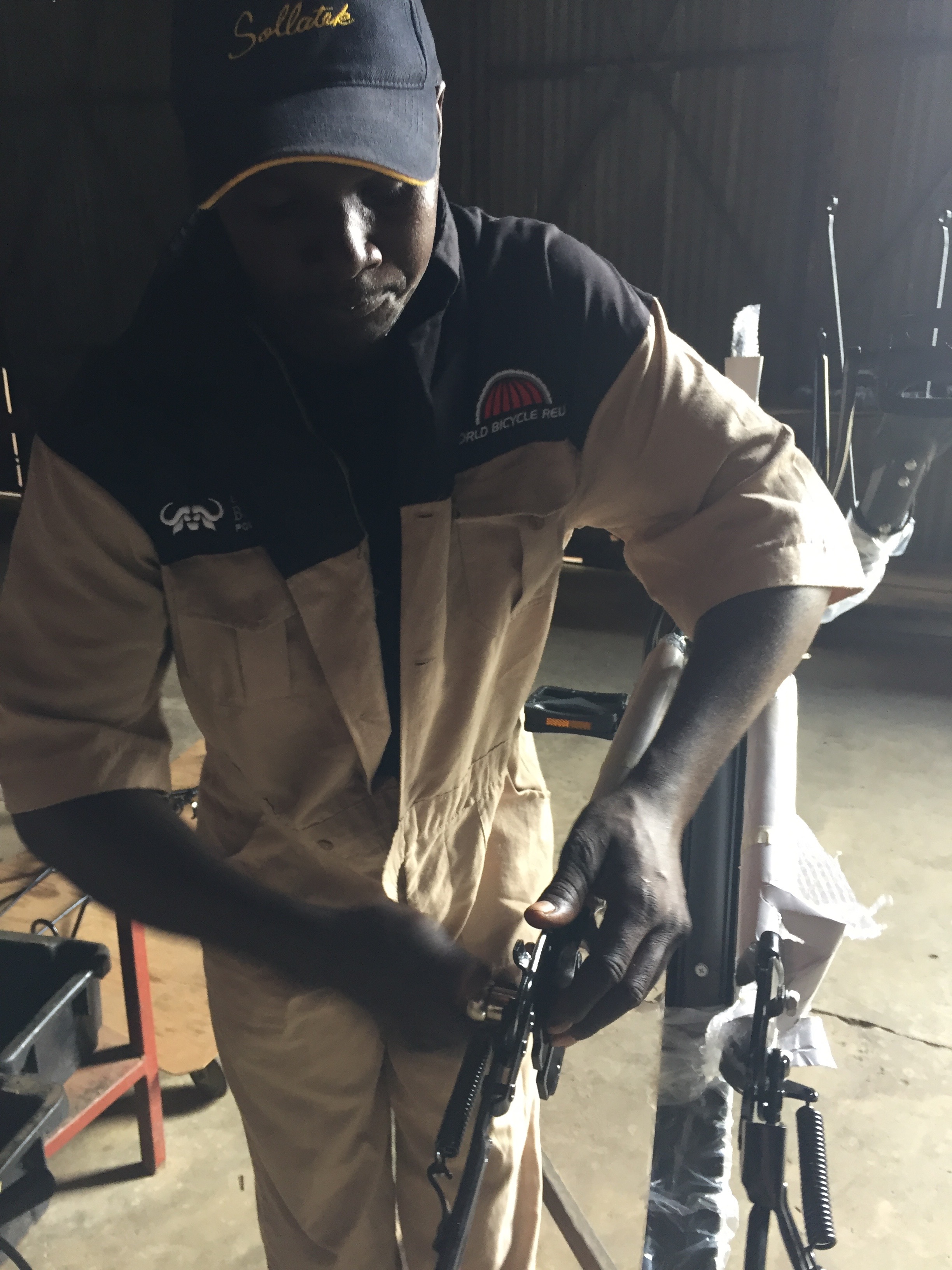
World Bicycle Relief Making a Difference
How World Bicycle Relief obtains funding is largely through having people and athletes become WBR ambassadors or team members and fundraise around specific events. One high level athlete that does this is professional mountain biker for Red Bull, Rebecca Rusch, who has a host of accolades including World Championships and National Championships along with a long list of top level races and not just in the sport of cycling. Another high level athlete who became involved with WBR is Tim Rugg who races across many disciplines and is a perfect model for how you can become involved with World Bicycle Relief. We had a bit of a Q&A with each of them to get an idea of who they are, how they Love cycling, and how they are making a difference with WBR.
Rebecca Rusch – Professional Mountain Biker for Red Bull and WBR Advocate

Q: Give us a brief, one to two sentence, rundown of who you are.
A: I’ve been a lifelong professional athlete in multiple sports and earned national and world titles along the way. I’ve broken records for endurance cycling. Beyond that, I am also an adventurer, author, speaker, firefighter and advocate. My motivation lies in pushing my own boundaries and inspiring others to do the same.
Q: What makes you love cycling to the degree that you do?
A: I’ve competed in many different sports and have passion for lots of them. But what makes cycling so special for me is that it’s such an ideal vehicle for exploration. I can go further, see more and discover more on a bicycle. It’s a tool for my profession, but also bonds me to many cultures and other people.
Q: How did you become involved with WBR?
A: I first learned of WBR through my long time partner and sponsor SRAM. What really struck a chord with me with WBR was the simplicity of how two wheels can change a life. Also, the more I learned about WBR the more I connected with their mission because they are not just giving a hand out, but instead are developing the infrastructure to create a program that is self sustainable.
Q: How do you use cycling to increase awareness and raise funds for WBR?
A: My most recent trip #BikeKili was intended to push myself and climb / bike Kilimanjaro and also raise awareness for WBR at the same time. Being in Africa was a very special trip for me with my own goal to do the highest ride of my life, but also impactful to visit the villages and meet the students who benefit from WBR. Being able to use my public exposure to gain awareness for WBR is the least I can do. I also find that people love to hear about athletic feats, but it means so much more when it’s tied to something bigger than an individual athlete or a record. I’ve found in my cycling adventures that the more I give back and share, the more I get back in return. Being aligned with WBR for #BikeKili elevated my experience in Africa. My sponsor Red Bull was also a huge help in putting together and distributing the Bike Kili video and content that we worked on. They’ve been a great support.
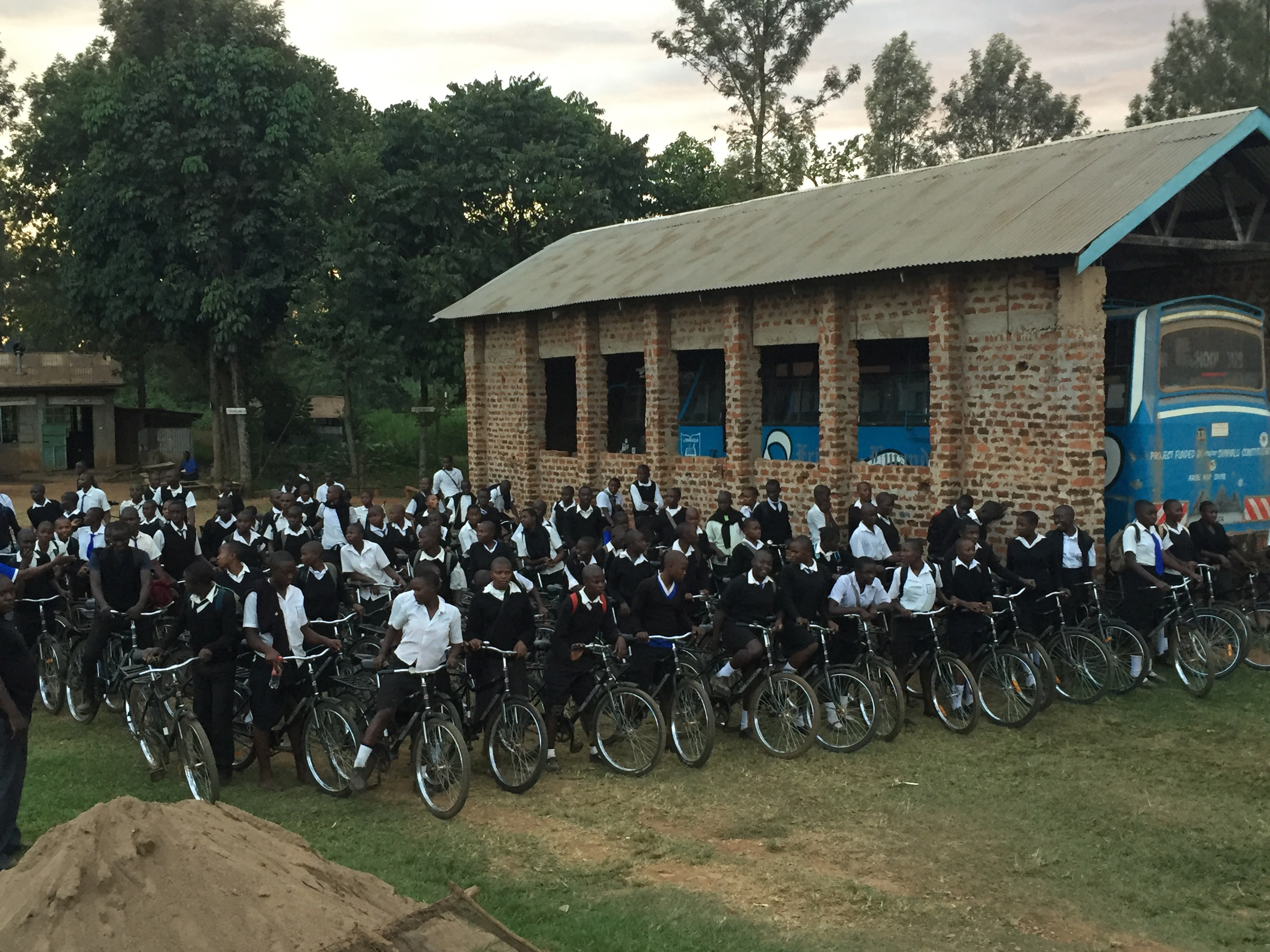
Q: Can you share an inspiring story of how the power of the bicycle helped change someones life?
A: After summiting Kilimanjaro by bike, I had the opportunity to visit two schools in Kenya that had benefited from the WBR program. Nearly 200 high school aged kids were the recipients of Buffalo Bikes. I got to meet them, ride to their homes, experience their commute and witness the challenges they experience in their daily lives.
I got to meet Andega and visit her home. Her normal commute to school when walking was 3 hours. There was a shorter route that was 2 hours, but it wasn’t a safe route and she feared being attacked on the way to school. She had to leave in the dark to make it to school on time. Now with a bike, she can leave during daylight hours and it only takes her 40 minutes to get to school. Other students with bikes meet her along the way and they ride to school together safely. You could see the confidence blossom on her face and in her demeanor when she swung her leg over her bike. It was a powerful experience to watch her ride out of her driveway with her mom smiling as she left.
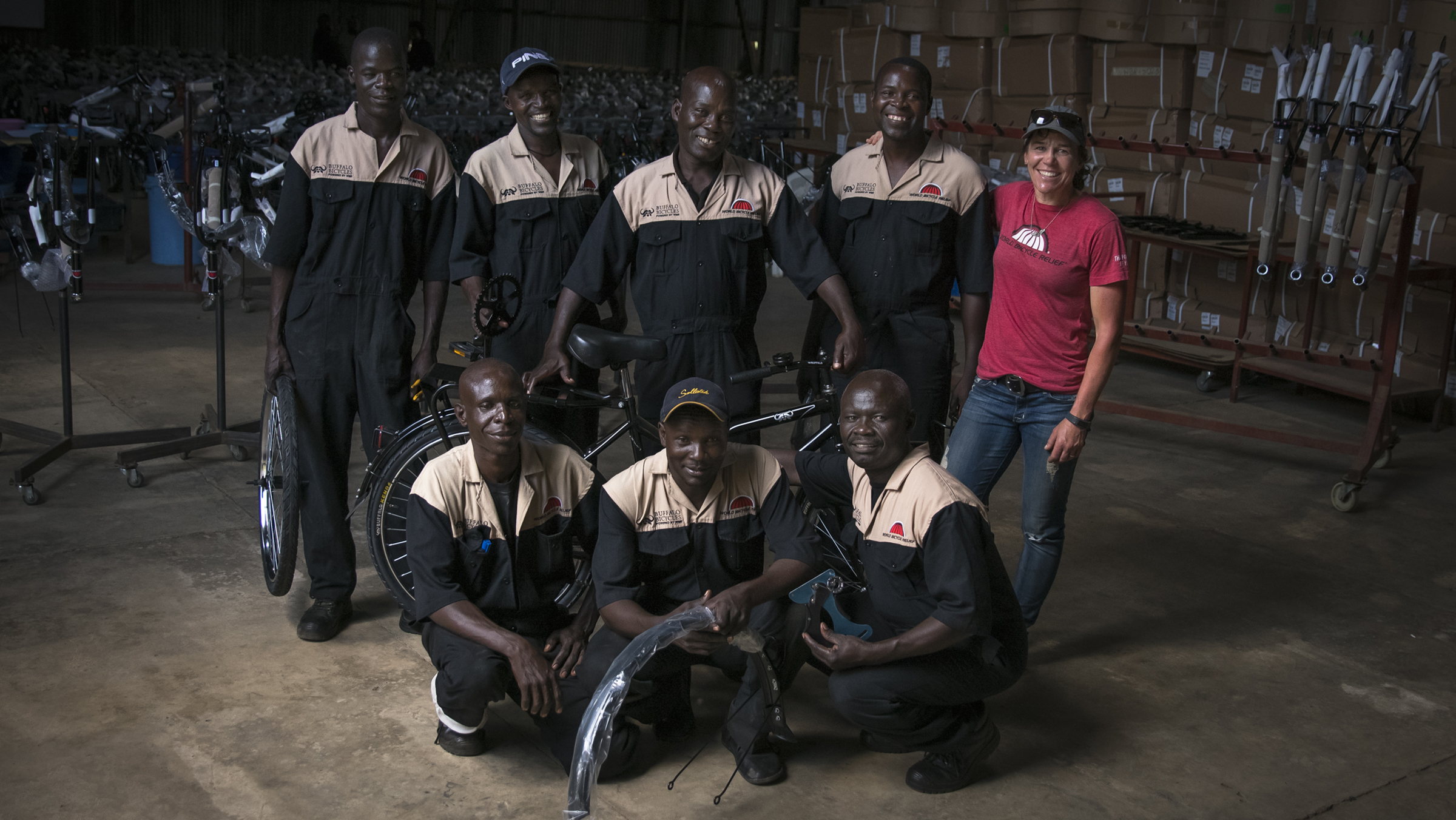
Q: How can anyone who loves cycling help WBR?
A: This is easy. By clicking on my #BikeKili WBR fundraising page, you can donate just $134 to provide a bike for a student in Africa. I have set a fundraising goal to raise $19,341 to represent the high point of Kilimanjaro and my climb/ride up there.
You can also find other projects on there, or start your own. The ultimate way to get involved is to take one of their Africa trips and witness first hand the Power of Bicycles!
Tim Rugg – Elite Multi-Disciplined Cyclist & Someone Making a Difference with Bikes
Q: Give us a brief, once to two sentence, rundown of who you are.
A: I am a bike commuter turned bike racer. I have raced in just about every discipline under USA Cycling to include road, cyclocross, MTB, and track. A wide range of interests means more bikes, and more bikes means more fun!
Q: What makes you love cycling to the degree that you do?
A: It has to be the pace. Cycling, whether on dirt or pavement, really allows me to see the world at exactly the right speed while increasing my focus to take all of life in at exactly the right time.
Q: How did you become involved with WBR?
A:The first time I got engaged with WBR was a silent auction hosted by WBR and the Optum / Kelly Benefits cycling team. I participated in the auction, learned more about the organization, and wanted to tie in my experiences in humanitarian aid before I ever became a cyclist to what I had learned to love about the power of bicycles for any person in any situation all over the world. I became an ambassador.
Q: How do you use cycling to increase awareness and raise funds for WBR?
A: I constantly challenge my friends to donate to any cause and often they do to WBR once they understand what the organization is doing for people. I wear the World Bicycle Relief jersey at targeted races during fundraising campaigns to get people to ask questions or to make people think about it. I have held raffles or donated cycling gear to engage donors. I think the connection between cyclists and people being able to use bicycles to better their lives is a direct relationship that once people understand, are actually excited to participate in the support of WBR.
Q: Can you share an inspiring story of how the power of the bicycle helped change someones life?
A: I can say without bias, before I ever touched a bike to train on and before I ever knew of World Bicycle Relief, I already knew bikes were a revolution in developing countries. I saw in Northern Uganda many years ago before I knew what a Criterium or a Madison was, how kids used bikes to make 20 kilometer rides to school possible, or how entrepreneurs used them as taxis, or farmers and builders used them to increase their productivity in transporting goods. When I became a cyclist after returning from my time in East Africa I always wanted to figure out a way to use something I was good at to share the love I experienced in these places that wanted to share theirs. In a way, the bicycle changed my life.
Q: How can anyone who loves cycling help WBR?
A: The easiest way is to donate. Any amount is significant because with WBR their is little spent in the transition from donor to work on the ground. To put it into perspective, a donation of $147 is the equivalent to putting a bike designed specifically for the region and the goal of empowering someone’s life. Another option if donating is not a possibility, you can become a fundraiser and use your creativity and network to exponentiate your impact. I personally challenge myself to do both and I hope anyone who recognizes how amazing this organization is will do the same. I’m currently fundraising through my involvement with WBR and race around the country and promote the cause however I can. This is one of thousands of ideas used to connect, engage, and support the efforts of ambassadors, the work of World Bicycle Relief, and the power of bicycles.
